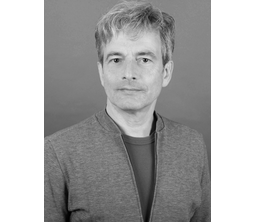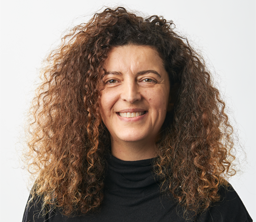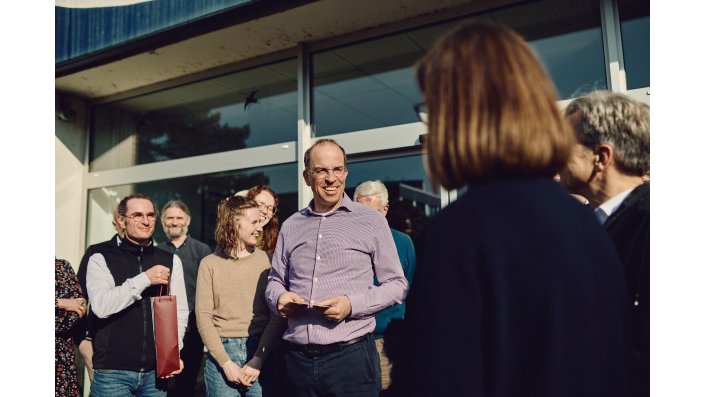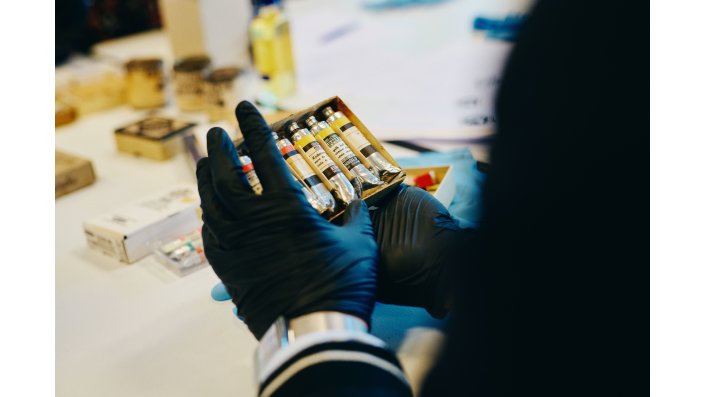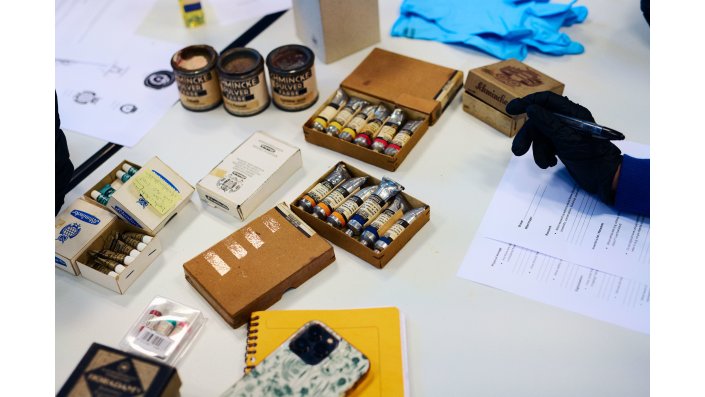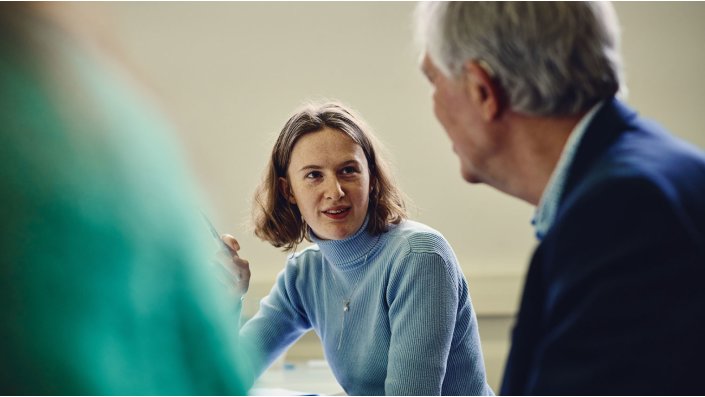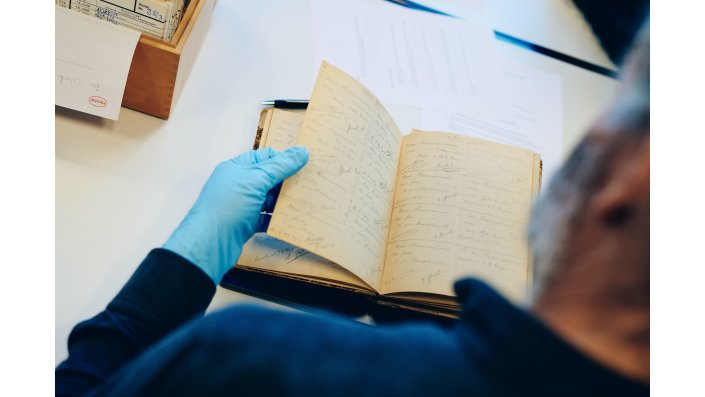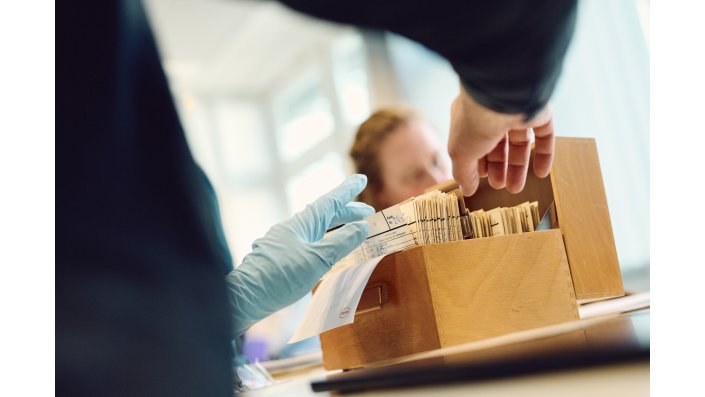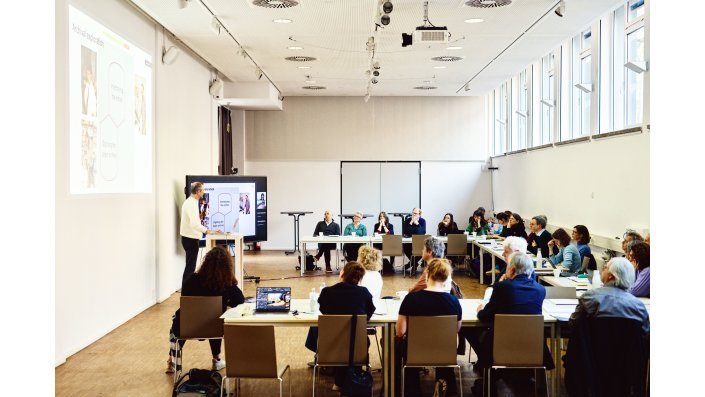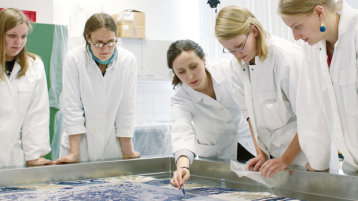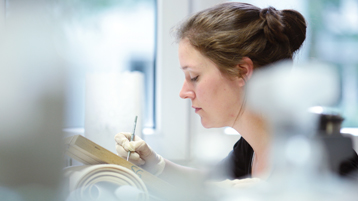CAMA meets Schmincke

On March 10 and 11, 2025, CICS hosted the second DFG-funded meeting of the Consortium of Artists’ Materials Archives (CAMA) in cooperation with the artists’ colour manufacturer Schmincke.
The aim of the CAMA network is to bring together different parties interested in the preservation of and access to the company archives of artists’ materials manufacturers. 36 participants from across Europe, including conservators, heritage scientists, art historians, business historians, experts in archive structure and digitalisation, and representatives from artists’ materials companies and institutions which are responsible for archive collections, came together for the two-day meeting.
The first day of the meeting took place at the premises of H. Schmincke & Co. GmbH & Co. in Erkrath. The artists’ paints manufacturer, founded in 1881, holds a fantastic collection of archive materials documenting the history of the company. In 2023 Schmincke and CICS formed a partnership which facilitates art technological research on the archive.
Following a warm welcome by CEO Markus Baumgart, participants joined a tour of the Schmincke factory and laboratory. It was a great way to be able to contextualise documents and paints by getting a glimpse into the manufacturing process.
The tours were followed by a discussion of why it can be relevant and beneficial for companies to support the preservation of archival material, with examples of how businesses have used archives to advertise and support their branding. After the history of Schmincke and the history of their archive were presented, the participants had the opportunity to look at some materials from the archive themselves in a hands-on workshop. Working in groups, they were tasked with discussing what might need to be considered when creating a usable archive with respect to different categories of objects like paint tubes or recipe books. The rich research potential of the Schmincke archive, as well as the complexities of storing, conserving, describing and digitalising its materials, were very apparent by the end of the first day, and everyone had a lot to talk about over dinner in Cologne that evening.
Bildgalerie
 0 / 0
0 / 0
Participants taking part in a workshop with materials from the Schmincke archive (Bild: Elia Schmidt)
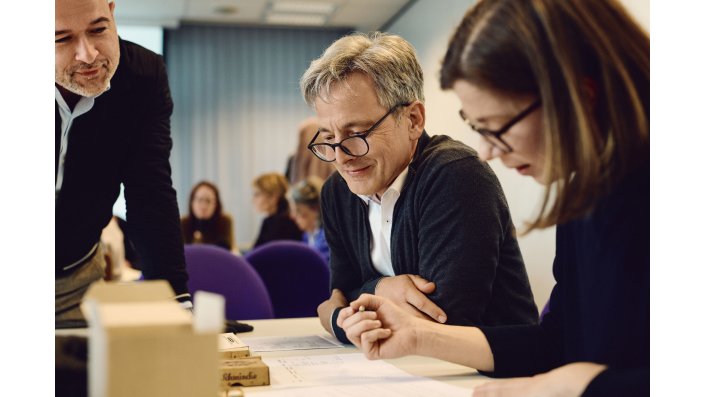 0 / 0
0 / 0
Participants taking part in a workshop with materials from the Schmincke archive (Bild: Elia Schmidt)
 0 / 0
0 / 0
Participants taking part in a workshop with materials from the Schmincke archive (Bild: Elia Schmidt)
The second day of the meeting took place at the TH Köln. In the morning, new research activities from some of the member institutions were presented. This included novel research on archival materials; work on preserving and developing some of the archives, and general insights into the digitalisation of and construction of infrastructure for archives. The diversity of the research interests within the network was particularly clear. It was also interesting to see on the one hand the difference in the conditions of the different archives, but on the other hand, how much they have in common. After the presentations, possible new research questions were discussed, with the twist that participants had to consider possible research topics of interest from the perspective of people from disciplines other than their own. This was particularly important as the network brings together people from diverse professional backgrounds with very different interests and motivations.
The meeting ended with a discussion of what the next steps for the network should be towards an overall aim of creating a research platform for the different archives associated with the group. This focused on considering the database structures and standards which could be used for the archives, using the examples of the digital infrastructures which have already been implemented in two of the member archives. After the main part of the meeting, Doris Oltrogge took some of the group on a tour of the materials collection at CICS.
Overall the second CAMA meeting was a great success, as, although the size and complexity of the task at hand for the network became clear, through the exchange of ideas and discussions which took place, the foundations for progress towards the shared goal of a platform for research on artists’ materials archives have been laid.
The meeting would not have been such a success without the organisation of Laura Gras, Gunnar Heydenreich, Wibke Neugebauer and Doris Oltrogge. We are looking forward to the next CAMA meeting in December at Royal Talens in the Netherlands.
Sarah Critchley
Zum Forschungsprojekt
April 2025

